Over the last few decades, skin treatments have gotten more effective and less invasive. Previously, cosmetic surgery was the only option for improving many common skin complaints. While people often get dramatic results, cosmetic surgery has major downsides.
Rather than paying thousands of dollars for an outcome that may or may not be ideal, men and women are turning to advanced noninvasive treatments to transform their skin.
Silicone Treatment Pads
An at-home solution that’s quickly gaining in popularity is the use of silicone treatment pads. Instead of just applying a corrective serum that sits on the surface of skin, silicone treatment pads are applied to the skin to help the serum penetrate more effectively. As a result, fine lines, wrinkles and stretch marks can be improved in appearance in as little as an hour.
Dermaclara is one of the skincare lines that’s really innovating with its Advanced Silicone Fusion Technology. Their reusable treatment pads are made with medical-grade silicone that’s uniquely shaped to fit various parts of the face and body.

Laser Resurfacing
Laser resurfacing is currently one of the most requested treatments at medical spas and dermatology offices. The procedure uses a laser to enhance the appearance of skin. It’s commonly used to improve acne scars, fine lines, wrinkles and sun damage.
The key consideration with this treatment is whether you’re going to use an ablative or non-ablative laser.
Ablative lasers – This type of laser vaporizes the top layers of skin. It’s considered a “wounding” laser and is more invasive than a non-ablative laser.
Non-ablative lasers – A non-ablative laser targets the lower layers of skin and is considered “non-wounding”. It works by stimulating collagen production and tightening the skin.
Ablative lasers are considered to be the most effective of the two. They aren’t as invasive as cosmetic surgery, however, there will be a significant recovery period during which the skin will peel off. Sometimes silicone treatment pads or another airtight dressing are used with an ointment right after ablative laser resurfacing to help speed up the recovery process.

Chemical Peels
Before there was laser resurfacing, the go-to treatment for renewed skin was a chemical peel. Chemical peels are used on the face, neck, chest and hands to correct sun damage, discoloration, and wrinkles. The American Society for Dermatologic Surgery notes that the treatment involves a chemical solution that’s applied directly to the skin. The solution encourages rapid exfoliation and will cause the skin to peel. There are three chemical peel levels:
- Superficial peels – Sometimes referred to as a lunchtime peel, superficial peels are mild and only affect the outermost layer of skin.
- Medium peels – A medium peel will exfoliate the outermost layer of skin and layers further down.
- Deep peels – This type of peel penetrates down into the middle layer of skin to exfoliate and remove damaged skin cells.
One deep chemical peel may be enough to improve minor and moderate skin complaints; however, most people choose to do a series of medium or superficial chemical peels over the course of several months.
Microdermabrasion
Another way to slough off the dull surface layer and reveal the healthier skin underneath is microdermabrasion. People that want to improve texture, tone or discoloration can do so with a series of microdermabrasion treatments.
An esthetician will also a specialized tool that has a buffer and suction device at one end. As they glide the buffer across your skin the suction device picks up the dead cells that are removed. You may notice visible improvements after just one treatment, but for optimal results typically three or more microdermabrasion treatments are needed.
Custom Facials
For thousands of years, facials have been used to treat specific skin issues and boost radiance. Facials provide benefits in two ways. The solution the esthetician uses can be customized to correct a specific skin issue and work for your skin type. This helps to ensure the facial will improve the skin and not create additional problems. The esthetician will also use specialized massage techniques to encourage blood circulation and lymphatic drainage.
The downside with facials is they have to be performed regularly to get the maximum benefit. Skin experts recommend getting at least one facial a month to treat a skin complaint.
Skin experts recommend getting at least one facial a month to treat a skin complaint.



